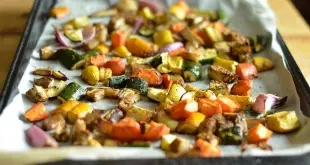Making it all work on YOUR plan
One of the most common questions I see new post-ops ask is “how many carbs a day should I eat?”
The tricky thing about this is that it’s not a “one size fits all” question. The number of carbs YOU should eat a day and the number I should eat can (and probably will) be completely different.
What I would like to point out to you, my dear fellow post-ops, is that while protein is of the highest priority in our food plans, carbs are important too. You should not attempt to cut carbs out of your life post-op (nor do I even think that’s humanly possible).
As you get further post-op, and your pouch capacities expand, you should integrate carbs into your plan for the benefit of the energy, satiety and fiber they give.
But for those who absolutely MUST have some parameters, I will say this. Many post-ops who are really into planning their food in a food journal usually pay more attention to the total percentage of their daily calories that come from carbs than how many grams they eat.
(“Huh?”)
Let me explain.
A carbohydrate has 4 calories. So if you eat a meal and that meal is 300 calories with 20g of carbs, 80 of those calories, or 26%, were from carbs. Looking at your day’s calories, if you take in 1000 calories and you ate 100g of carbs, 400 calories, or 40% of your daily calories, came from carbs.
There are various schools of thought on the ideal balance of protein:carbs:fat. The most common one I’ve heard is 40/35/25 (protein/carbs/fat). Most online food journals have a pie chart function that easily tells you how your daily calories are distributed.
Paying attention to this, of course, involves meal planning, which some seem to think is a dirty phrase. I won’t argue for or against here, but you should know that it is very easy to consume too much of anything if you aren’t paying attention. Knowledge is power and having some conception of the make-up of your daily caloric intake can help you along the way.
The one thing I find is missing from many post-op plans I see, however, is balance. If the goal of our surgeries is to eventually eat like a healthy human, we need balance. Your meals should be composed of protein, carbohydrates and fat — preferably the most beneficial and appropriate kinds of each that you have access to.
But different meals require different nutrient balances. As I stated before, before a workout you need carbs to sustain you. Other times you need protein to keep you sated until your next meal. You always need fiber. It can be a bit overwhelming. So here are some tips:
For the most part, choose more complex carbohydrates like vegetables and fruits. And, as much as you are able, eat them in their most natural form. Canned/frozen fruits and veggies aren’t bad, but the fresher the better!
When considering starches, choose whole grains with a decent amount of fiber per serving. Anything with more than 2g of fiber per serving is usually a decent choice, however, if you have to take 50g of total carbs to get that 2g of fiber? You might want to re-think your choices. I’ve attached a list of my favorite starch products at the end of this post to give you an idea of some better options.
In general, always eat a carb with protein. Post-ops suffering from reactive hypoglycemia know this is important in keeping blood sugar stable. In general, however, the practice will keep you from becoming hungry again too soon.
It’s up to you how your carbs are distributed throughout your day, but think about how your day will go when planning your food. If you have a family dinner at an Italian restaurant, you might want to go lighter on your carb consumption earlier in the day. Small decisions like this are what success is made of!
And as promised, here is a list of my preferred “starchy carbs.” There really are some good products on the market that give you a good balance of carbs and fiber. For your convenience I’ve broken this out into things you can find or request in your local store and things you need to order from the internet.
Stuff you can probably find at your local store:
- Ak-Mak whole grain crackers
- Wasa whole grain crisps
- Flatout Multi-Grain wraps
- Spelt cakes (like a rice cake, except it’s whole grain)
- And of course…Fiber One original cereal!
Stuff you’ll probably need to get off the internet:
Well…that about wraps up this little series. It is by no means exhaustive. There’s plenty more to know about carbs and I empower you to research! If you have any questions, hit us up. You know we’re always happy to help!
<< Part Four: Carbs & Fiber: YOU do the math
Now that you’ve read the enire series, you can download it as a pdf for free (Adobe Acrobat required) by clicking here!
And as a reminder, if you enjoyed this series and feel so inclined, I’d love to count you among my supporters in my goal to walk the Susan G. Komen 3-Day for the Cure. My widget is in the right hand navigation bar. If not, no worries. We’re still cool!
 Bariatric Foodie Play with your food
Bariatric Foodie Play with your food






Thank you so much for this series! Nikki I appreciate your blog so much. I am so grateful to you for helping me on my journey. I am now a little over a year out and I know I am healthier because of you!